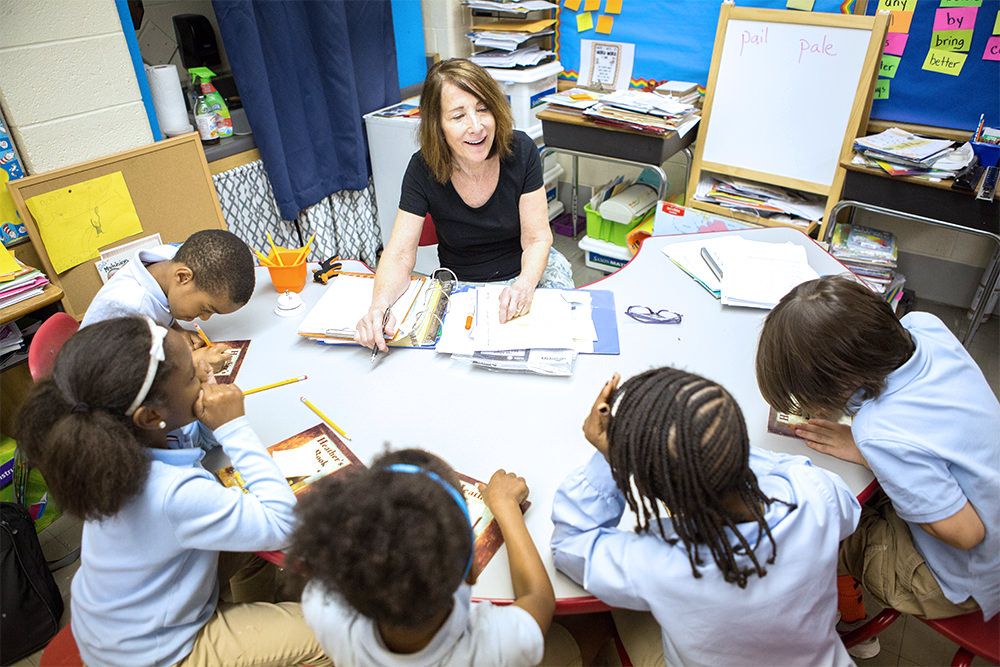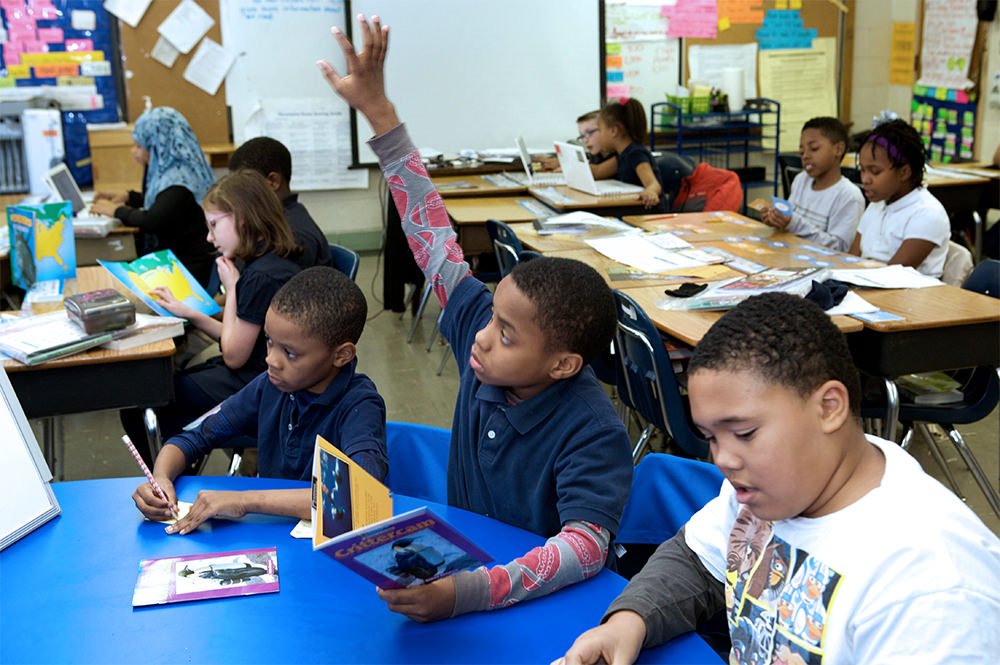Coaching Guided Reading
Use the following resources as you work with teachers to enhance and grow Guided Reading in their classrooms.
Coaching Conversation Starters
Reflective practitioners think deeply about their instruction — both the content and the implementation. Use these questions to guide your conversations with a teacher before and after a Guided Reading lesson to enhance the lesson and help grow a teacher’s practice.
Lesson Planning

How did your organize your groups? What formal (DRAs, etc.) and informal (conferring notes, etc.) data helped you to determine the group members and size?
Are the groups flexible? Do they change frequently in response to new information about children’s needs?
What is your primary objective for this lesson? Why did you choose this objective? How will you explain it to the children?
What routines have you taught children to use during Guided Reading lessons? For example, how do children hold their books before reading, where and how do children read so that you can listen in to one child at a time, and how do they prepare for and participate in after reading activities?
Why did you choose this book? How does the book support your objective?
How will you introduce the book, in addition to stating your primary objective to children?
Will you review any vocabulary to prepare children for reading?
How will you demonstrate or model your primary objective before children begin to read on their own and practice using it?
Will children be reading the entire book today, or will you ask them to stop at some predetermined point? What will you ask them to do if they are done reading before their group mates?
How will children sit and read so that they are not distracted by each other and so that you can listen in to each reader separately?
How and where will you take notes as you listen in to each child read?
What questions will you ask at the end to engage children in discussion and support their comprehension of the text?
How will you reinforce the teaching point at the end of the lesson, and connect it to children’s independent reading?
How will you support the rest of your class to work independently while you meet with this group?
Reflection & Action Planning

What do you think the children learned during the lesson? How do you know?
Was this book a good match for your children and the literacy objective?
What did you notice about individual children as you listened in to their reading?
How did you record your observations?
How did you support individual children’s word solving strategies when you were listening to them read? Did you notice any patterns of strengths or needs in word solving?
How did you support children’s comprehension at the end?
Did the children have an opportunity to ask their own questions and express their ideas?
What did you learn about your children during this lesson? How will this inform future Guided Reading lessons?
How can you connect the learning in this lesson to other areas of your literacy block?
Reflect on the classroom culture during the Guided Reading lesson. Were the children taking care of themselves and others in the classroom while you met with this group? Are there any new procedures or anchor charts that you need to review in order to help the rest of the class work independently during Guided Reading?
Viewing Lenses
When you are working with a teacher on a lesson, it helps to have a specific viewing lens to focus your conversation. Here are some ideas for viewing lenses for Guided Reading.
| Focus Question | What to Note |
|---|---|
|
How are the children grouped? |
|
|
Is the text appropriate for the group and objective? |
|
|
How does the teacher prepare children to read the book? |
|
|
What does the teacher do while children read the text to themselves? |
|
|
How does the teacher finish the lesson? |
|
Guided Reading Viewing Lens - After Reading
Use this resource to guide your observations and conversations around the Guided Reading Lesson.
Guided Reading Viewing Lens - Before Reading
Use this resource to guide your observations and conversations around the Guided Reading Lesson.
Guided Reading Viewing Lens - Choosing Texts
Use this resource to guide your observations and conversations around choosing texts for Guided Reading.
Guided Reading Viewing Lens - During Reading
Use this resource to guide your observations and conversations around the Guided Reading Lesson.
Guided Reading Viewing Lens - Forming Groups
Use this resource to guide your observations and conversations around forming groups for Guided Reading.
Guided Reading Viewing Lens Ideas
Use this resource to guide your observations and conversations around Guided Reading.
Guided Reading General Viewing Lens
Use this resource to guide your observations and conversations around the Guided Reading Lesson.
Descriptors for Early Literacy Teacher Achievement (DELTA)
This resource describes key elements of effective practice in an early literacy classroom. It is a valuable coaching tool because it standardizes expectations around different practices. Use the DELTA to set goals with teachers and guide implementation.

Comments (33)
Log in to post a comment.